I have some KML data which defines an area on a map, such as the following:
131.0764742247829,-15.80786022929951,0 132.6357700620065,-16.54895727734661,0
134.1119108999971,-17.28040233069844,0 135.8545033459996,-18.1298170074137,0
137.7396886168202,-19.07860187595016,0 140.011948401144,-20.18462043802856,0
142.3114600417346,-21.19369381963822,0 144.1566045495202,-22.15731684591415,0

I'd like to determine within my iOS application if the user's current location is inside of this defined area. How can I do this?